44 how to read fats on food labels
How to Read Nutrition Labels: Fat Content, Carbs & What To Look For Nutrition labels are required to include total fat, saturated fat, and trans fat. The total amount of fat in the diet is a percentage of your calorie needs. The recommendation for the typical American diet is around 30%. For someone taking in 2,000 calories, this would mean around 70 grams of total fat per day. How to Read Everything on the Nutrition Facts Label - Food Network If you want to figure out the grams of fat that it will take you to get about 30% of fat in your diet each day do the following: Estimate your total calories for the day. Let's say that number...
Fat Content on Food Labels - Reading Between the Lines The Mayo Foundation continued, "Still, you may be able to tell if a product contains trans fat, even if it's not directly listed on the food label. Look for the words ' hydrogenated ' or 'partially hydrogenated' in the list of ingredients. These terms indicate that the product contains trans fat.

How to read fats on food labels
3 Ways to Read Nutrition Facts on Food Labels - wikiHow Life Every number listed beneath "total fat" is calculated based on the amount contained in a single serving. So if the saturated fat on a label is listed at 6 grams but the number of servings is listed as 3, it means that there are a total of 18 grams of saturated fat in the container. [1] Figuring Out Food Labels (for Kids) - Nemours KidsHealth A food with 5% or less of a nutrient is low in that nutrient. A food with 10%–19% of a nutrient is a good source of that nutrient. A food with 20% or more of a nutrient is high in that nutrient. The information on food labels is based on an average adult diet of 2,000 calories per day. Learning To Read Labels :: Diabetes Education Online On a nutrition food label, subtract the fiber from the total carbohydrate amount. When you read food labels, the grams of sugar are already included in the total carbohydrate amount, so you do not need to count this sugar amount separately. The grams of sugar listed include both natural sugars, from fruit or milk, and added sugars.
How to read fats on food labels. Reading Food Labels (for Parents) - Nemours KidsHealth This number indicates how much fat is in a single serving of food. Although too much fat can lead to health problems, our bodies do need some fat every day. Fats are an important source of energy — they contain twice as much energy per gram as carbohydrates or protein. Fats provide insulation and cushioning for the skin, bones, and internal organs. How to read food labels: MedlinePlus Medical Encyclopedia If a food has these fats, the amount will be listed on the label under total fat. They are measured in grams. Look for foods that have no trans fats or are low in them (1 gram or less). Sodium is the main ingredient of salt. This number is important for people who are trying to get less salt in their diet. Food Label Detective: How to Spot the Good Fats Bad. All fats are not created equal. Dietary fat can be broken down into the "good," monounsaturated fat and polyunsaturated fat, and the "bad," trans fat and saturated fat. Good fats are a necessary part of a healthy, well-balanced diet. Monounsaturated fats are found primarily in plant-based oils like olive and canola, and nuts and seeds. How to read food labels | healthdirect what ingredients it contains (listed in order from largest to smallest by weight) nutritional information (such as average amount of energy, fat, protein, sugars and salt) percentage labelling (how much of the main ingredients it contains, so you can compare it to other products) use-by or best-before date details of the manufacturer
Food Labels | CDC - Centers for Disease Control and Prevention Check the Serving size first. All the numbers on this label are for a 2/3-cup serving. This package has 8 servings. If you eat the whole thing, you are eating 8 times the amount of calories, carbs, fat, etc., shown on the label. Total Carbohydrate shows you types of carbs in the food, including sugar and fiber. Interpreting Total Fat and Types of Fat on Food Labels Determining the type of fat can help you decide whether or not a food is rich in 'healthy' and/or 'unhealthy' fats. Trans fats and, in some cases saturated fats, are considered "unhealthy" or "bad" while monounsaturated and polyunsaturated (omega-3) fats are generally healthier alternatives or "good" fats. How to Read a Food Label & How to Find Unhealthy Hidden Ingredients If the food label has partially hydrogenated oil in it, it has trans fat. Foods that commonly contain partially hydrogenated oils are baked goods, fried foods, snacks and creamer and margarine (13). Avoid any products that list one of these ingredients " partially hydrogenated ," " fractionated ," " shortening " or " hydrogenated ". How To Read Food Labels - 10 Tips - Pritikin Weight Loss Resort 8. Check the types of fat. Make sure there are no saturated fats, partially hydrogenated fats, or tropical oils in the ingredient list, including lard, butter, coconut, cocoa butter, palm oils, shortening, margarine, chocolate, and whole and part-skim dairy products. They're all damaging to your arteries and heart.
Food Labels: Fat & Cholesterol | Home & Garden Information Center The Nutrition Facts label shows you how much fat is in a product, even if the fat is hidden as an ingredient. The serving size and the nutrients listed on this label are consistent, which makes it easy to compare similar products without any calculations. % Daily Values (% DVs) are listed in a column on the "Nutrition Facts" label. How To Read Food and Beverage Labels | National Institute on ... Feb 24, 2022 · The % DV information is not calculated with the unique needs of older adults in mind. Read the nutrition label as a whole to determine how a particular food or drink fits into your healthy eating pattern. Is lower % DV always healthier? If a food has 5% DV or less of a nutrient per serving, it is considered low in that nutrient. If it has 20% ... How to Read Food Labels for Fats and Oils A Note on Ingredient Lists Fats and oils can come from many sources, like animal fats, fish, seeds, plants, and nuts. Reading the ingredient lists on products will reveal the source of the fat. For oils and fats ingredient lists, fats and oils are referred to by their common names (e.g., "beef fat," "cottonseed oil"). How to Read Food Labels Without Being Tricked - Healthline Aug 19, 2020 · Reading labels can be tricky. Consumers are more health-conscious than ever, so some food manufacturers use misleading tricks to convince people to buy highly processed and unhealthy products.
Easy Guide to Understanding Food Labels When You Have High ... - MyDoc Ideally, best to get 0 grams of this per day. Keep in mind that manufacturers can list their products as 0 grams if it has less than 0.5 grams of trans fat per serving. This means that your food may contain trans-fat even if the food label says 0 gram. Therefore it's important to check the ingredient list (more on this later).
Quick Tips for Reading the Nutrition Facts Label - Food and Drug ... Nutrients to get less of include: saturated fat, trans fat, sodium, and added sugars. ... Quick Tips for Reading the Nutrition Facts Label The Nutrition Facts Label Tip Card NFL10 | 2020.
How to Read Nutrition Labels - Betr Health To better understand how much "good" fat you are consuming, all you have to do is subtract the amount of trans and saturated fats from the total fat. This will tell you how much unsaturated or "healthy" fat is in a product. See, it is that simple! Make sure to get enough of these.
This Is How to Read a Nutrition Facts Label on the Keto Diet Since the 1990s, some changes have been made, including which nutrients manufacturers must clearly list on labels. [ *] Nutrients like vitamin A and vitamin C are no longer required, while vitamin D, potassium, "added sugars," and trans fats must appear on labels [ * ].
How to Read a Dog Food Label – American Kennel Club Nov 30, 2020 · All pet food labels follow roughly the same format: Product and brand name or unique identifier. Quantity in terms of product weight, liquid measure, or count, depending on the formulation of the ...
Food labels - NHS Front-of-pack labels usually give a quick guide to: energy fat content saturated fat content sugars content salt content These labels provide information on the number of grams of fat, saturated fat, sugars and salt, and the amount of energy (in kJ and kcal) in a serving or portion of the food.
Changes to the Nutrition Facts Label | FDA - U.S. Food and ... Mar 07, 2022 · It will now read: “*The % Daily Value tells you how much a nutrient in a serving of food contributes to a daily diet. 2,000 calories a day is used for general nutrition advice.” 13. I heard ...
Nutrition 101 Video Series: How to Read a Nutrition Facts Label In general, remember the 5/20 rule: if you see that a food or beverage contains 5% DV or less of a nutrient, it is considered low in that nutrient. If it has 20% DV or more, it is considered high. For the most part, we should choose products with higher %DVs in the nutrients to get more of, and lower %DVs in the nutrients to get less of.
Fats, sugar, carbs: How to read a food label (and seven ... - Good Food The "total carbohydrate content" of the food will actually include the sugars within this number and give you an idea of the amount of fuel a food contains. For example, if you consider that a slice of bread or a piece of fruit contains 15-20 grams of carbs per serve, then a food that contains 60-80 grams of carbs per serve is an energy-dense ...
How to Understand and Use the Nutrition Facts Label | FDA Nutrients to get less of: Saturated Fat, Sodium, and Added Sugars. Saturated fat, sodium, and added sugars are nutrients listed on the label that may be associated with adverse health effects...
Understanding Food Nutrition Labels | American Heart Association Mar 06, 2017 · Not all fats are bad , and total sugars can include both natural and added sugars. Limit the amounts of added sugars , saturated fat and sodium you eat, and avoid trans fat. When choosing among different brands or similar products, compare labels and choose foods with less of these nutrients when possible.. 4 - Get enough of the beneficial ...
Understanding Ingredients on Food Labels | American Heart ... Mar 06, 2017 · There are many terms used for sugar on food labels. You might see sugar listed as the fourth ingredient in a product and think it’s not so bad. But sugar can also be listed as high-fructose corn syrup or corn syrup, agave nectar, barley malt syrup or dehydrated cane juice, to name just a few. Read more about sugar and sweeteners.
How to Read Nutrition Facts Labels the Right Way - GoodRx Nutrition Facts labels are required to list the total fat, saturated fat, and trans fats on packaged food products. It's important to choose foods with the right kinds of fats. Here are the differences between the fats you'll see on the label. Bad fats Saturated and trans fats are the less healthy types of fats.
Easy Way to Tell if Food Has Trans Fats; Don't Trust Labels Take the time to read every word! If the ingredients list contains the following items, the food has trans fats: "Partially hydrogenated" or just "hydrogenated." But if it says "fully" or "completely" hydrogenated, it doesn't contain trans fat. If it only says "hydrogenated," you don't know if it's fully or partially. Shortening
Learning To Read Labels :: Diabetes Education Online On a nutrition food label, subtract the fiber from the total carbohydrate amount. When you read food labels, the grams of sugar are already included in the total carbohydrate amount, so you do not need to count this sugar amount separately. The grams of sugar listed include both natural sugars, from fruit or milk, and added sugars.
Figuring Out Food Labels (for Kids) - Nemours KidsHealth A food with 5% or less of a nutrient is low in that nutrient. A food with 10%–19% of a nutrient is a good source of that nutrient. A food with 20% or more of a nutrient is high in that nutrient. The information on food labels is based on an average adult diet of 2,000 calories per day.
3 Ways to Read Nutrition Facts on Food Labels - wikiHow Life Every number listed beneath "total fat" is calculated based on the amount contained in a single serving. So if the saturated fat on a label is listed at 6 grams but the number of servings is listed as 3, it means that there are a total of 18 grams of saturated fat in the container. [1]


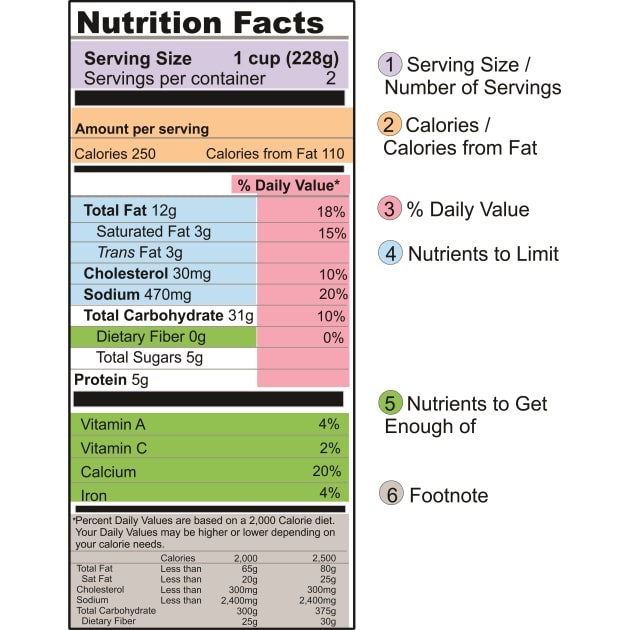


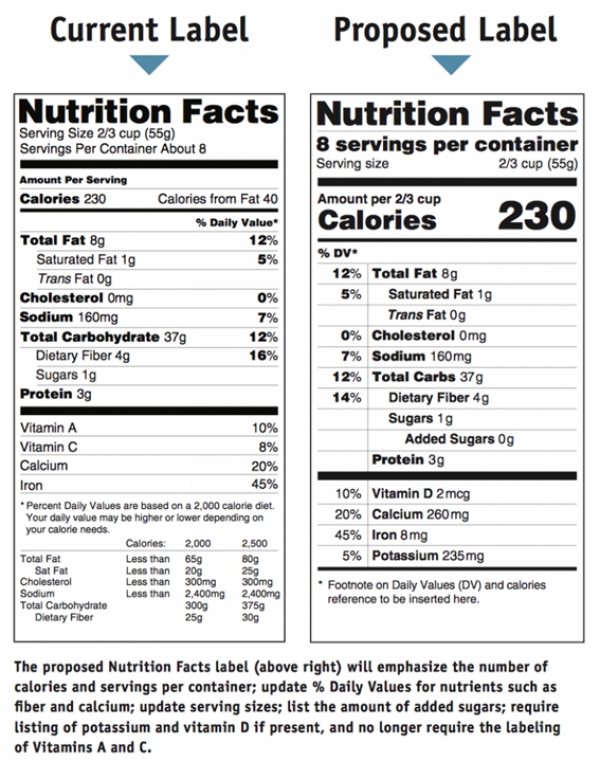
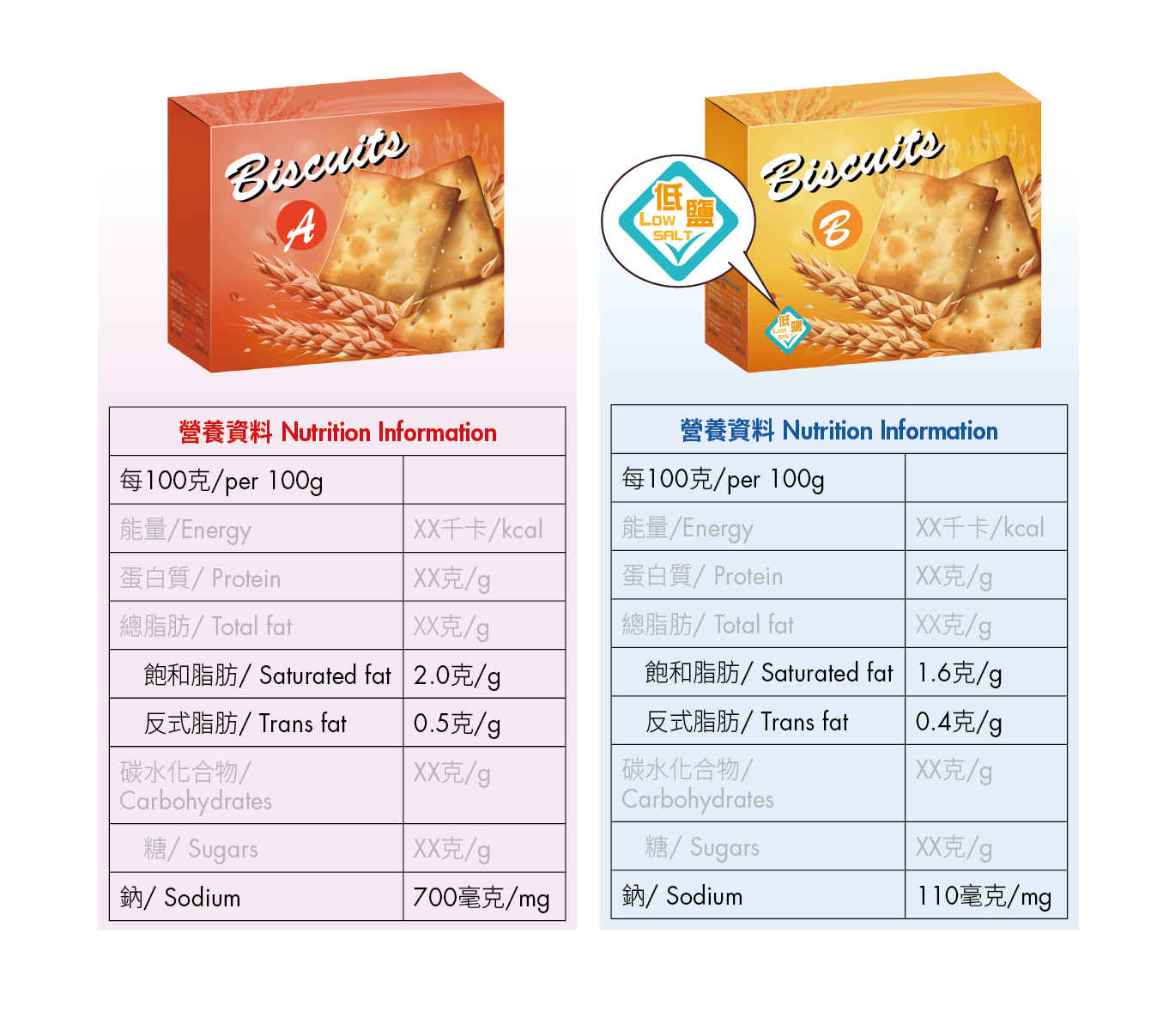
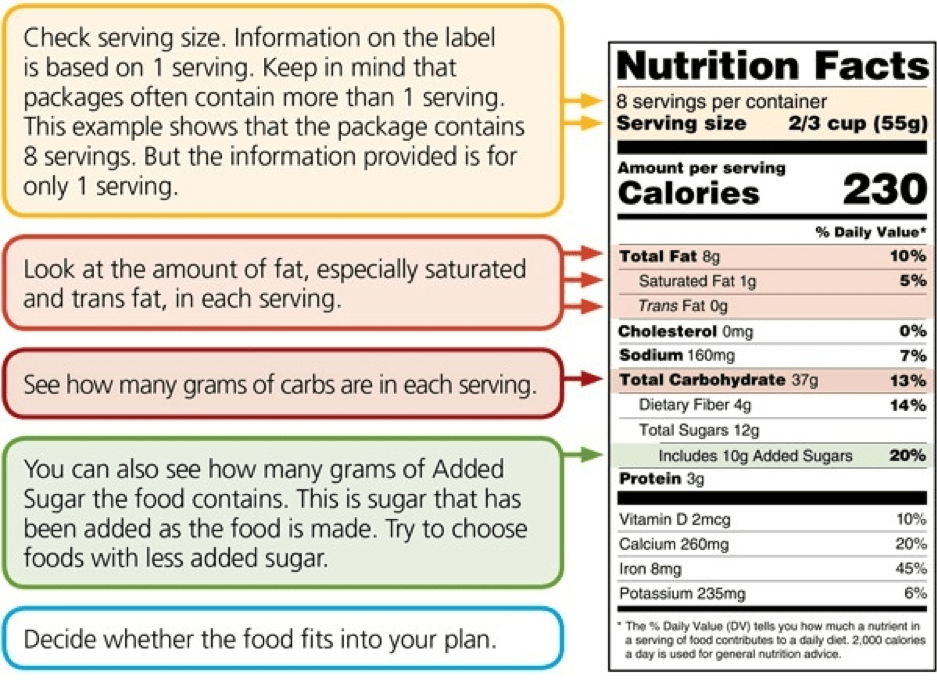






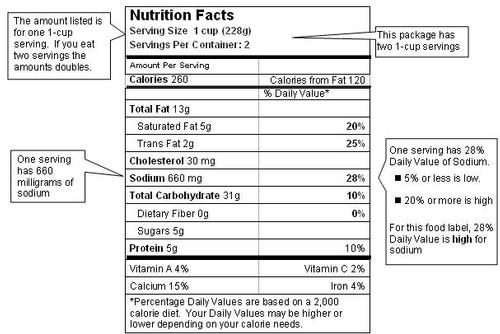




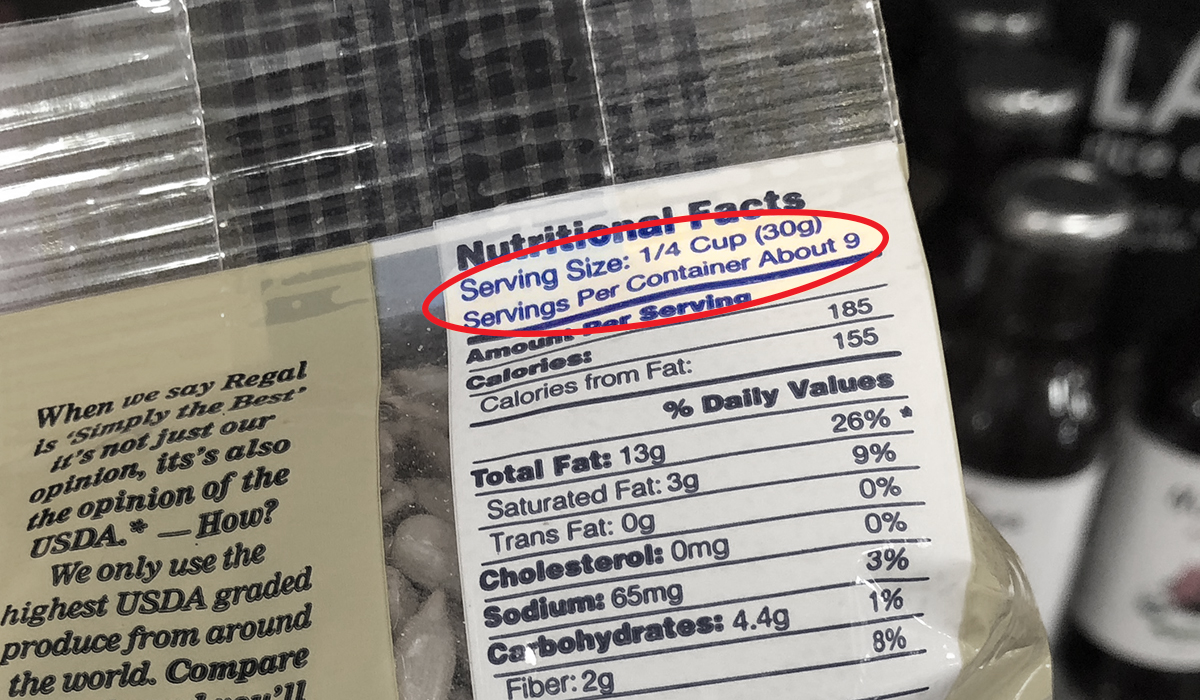
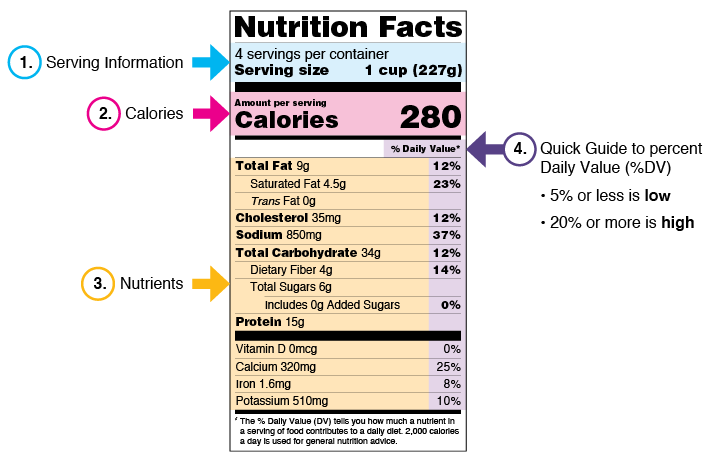








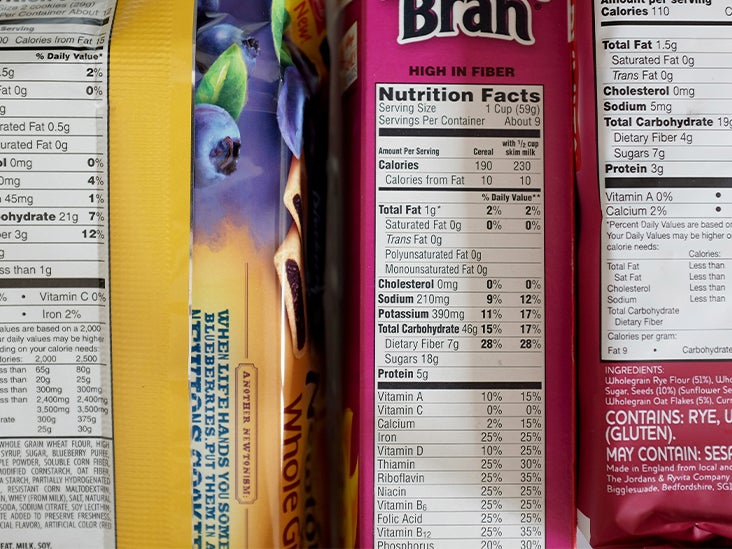
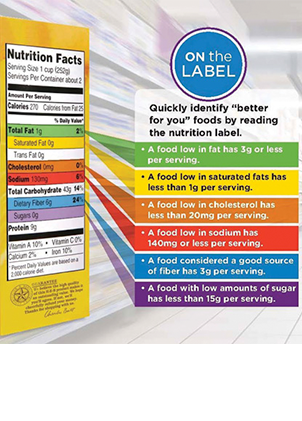









Post a Comment for "44 how to read fats on food labels"